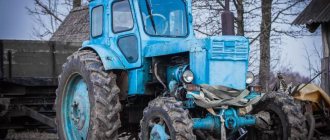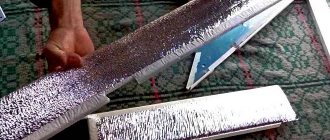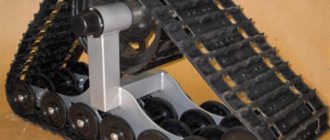The Soviet LuAZ car, which can be redesigned independently, is a light SUV, the production of which began in the late sixties of the last century. The car turned out to be compact, passable and maneuverable, perfect for rural areas. Despite the specific interior, the car was in demand, as it was unpretentious in maintenance and operation, and at the same time had good driving performance. Nowadays, it is unlikely to find an original domestic jeep of this brand on the roads, but tuned versions still delight their owners. Let's consider the possibilities of improving this vehicle, but first we will study its standard characteristics.
Power unit
Despite the fact that domestic cars are difficult to classify as the elite category of the automotive industry, minor modifications to the LuAZ will allow you to get a completely decent vehicle both in terms of driving parameters and in terms of comfort. The main changes concern the power plant, chassis and interior equipment.
The standard SUV engine has a good “appetite”. It consumes about 14 liters of fuel per hundred kilometers. Moreover, the engine capacity is only 1.2 liters. Other features of the power plant of the car in question are given below:
- Atmospheric cooling, which causes high noise and unstable operation at high speeds, maintained when overcoming difficult obstacles. If handled carelessly, the unit may overheat.
- Low power rating. For such a volume and fuel consumption, 40 horsepower is clearly not enough.
- Imperfect carburetor design, which often floods the cylinders with fuel. This negatively affects the operation and starting of the engine, especially when cold.
- The resource of the unit before major repairs does not exceed 80 thousand kilometers.
Background [ edit | edit code]
In the mid-1950s, NAMI developed a promising type of minicars and their units, planned for development during the implementation of the Seven-Year Plan for the Development of the National Economy (1959-1965).
This type included three types of cars: a four-seater general-purpose microcar intended for sale for individual use (the future ZAZ-965); a two-seater microcar for disabled people, designed to replace wheelchairs from the Serpukhov plant (the experienced NAMI-031, did not go into production) and a light multi-purpose cargo-passenger vehicle, designed to transport four people, or two people and 200–250 kg of cargo. The development of the latter concept was started by NAMI in 1958 together with the Irbit Motorcycle Plant with the construction of a prototype NAMI-049 “Ogonyok”, the design of which was largely based on the previously developed military amphibious all-terrain vehicle NAMI-032G (late 1956 or early 1957). The car had a steel supporting base and body frame (pillars, windshield frame, tailgate opening), onto which fiberglass outer panels (tails, doors, hood, side) were attached. As a result, an optimal combination of weight was achieved - only 752 kg in running order - and dynamic qualities - the maximum speed with a 22-horsepower Irbit MD-65 engine was 80 km/h, as well as fuel consumption - 6.7–7.1 l/ 100 km, depending on road conditions. Independent torsion bar suspensions on trailing arms, permanent drive to the front axle with the rear axle being disengaged, lockable wheel differentials, and wheel gearboxes were used. The carrying capacity was 300 kg with two passengers, or four passengers.
Subsequently, the designers of a repurposed for the production of minicompact cars (Zaporozhye, Ukrainian SSR) joined the work on the car, on which prototypes of the NAMI-049A “Tselina” (light truck) and ZAZ-969 were created, unified in the power unit with the ZAZ model that had just been mastered by the plant -965 “Zaporozhets”.
Chassis
Alteration of the LuAZ will also be required in terms of the steering and chassis. In the standard version, the car is equipped with high-profile tires, which contribute to swaying and deterioration of handling on the road. The tire width is also insufficient (only 165 mm). Overcoming large snowdrifts or deep mud on such wheels will be very problematic. The diameter of the discs is 15 inches, which is acceptable on uneven areas, but interferes with active acceleration. The disadvantages also include small wheel arches and short travel of the wishbone suspension.
The steering wheel has significant play and operates through a worm mechanism. Its design leaves much to be desired. There is also a problem with the steering control. Remaking LuAZ in this direction means replacing existing parts with high-quality analogues or making new ball joints yourself in a turning workshop. The fact is that this unit has 8 rods, each of which is equipped with a pair of ball ends. As a result, there is a huge backlash and the need for constant maintenance of the element.
People's love
“Volyn” became famous among the people. She is both loved and hated, but she is clearly not treated with indifference. You can even judge this by the car’s nicknames: the already mentioned “zhuzhik”, “Bagpipes”, “Luntik/Lunokhod”, “jerboa”, “Cheburashka”, etc.
The first popular “rogue” is a great seller to this day, and the reason is not only its outstanding off-road qualities. The almost complete lack of comfort opens up scope for tuning the LuAZ 969, which attracts craftsmen.
You can buy a LuAZ 969 today in several ways:
- from private hands. The price is individual, depending on mileage and condition. There are cases when they sell completely new cars, with a mileage of a couple of kilometers and in perfect condition, the car has just been in the garage for 20-25 years. Collectors are willing to pay a lot of money, which sellers naturally know.
— buy a LuAZ 969 from conservation. Mothballed LuAZs are cars written off from reserve in military units and sold to private individuals. Please note that this way you can only buy early versions, and the condition of the cars can be either close to ideal or practically ruined. In addition, it is necessary to properly depreserve the car and prepare it for use.
LuAZ: engine modifications
As a rule, the power unit is improved in two ways: by modifying the standard engine and by installing a model from VAZ. Let's consider both options.
Modernization of the car's power unit is aimed at increasing engine reliability and reducing fuel consumption. A certain list of manipulations will help optimize the operation of not only this power unit, but also many other analogues.
Stages of work:
- Installation of another carburetor. Using an adapter, install the DAAZ-2105 model, which will increase the reliability of starting at idle and reduce fuel consumption. Spare parts for this unit are not in short supply.
- Replacing the air filter with a more modern version.
- Grinding the cylinder head. Since the motor is V-shaped, manipulation must be performed on both elements. To do this, the seat plate is ground down a couple of millimeters, which will reduce the volume of the combustion chambers and increase compression. This will affect the decrease in the “appetite” of the car.
Reliability and safety
If we talk about the durability and reliability of this vehicle, then there are many conflicting opinions among drivers. A clear advantage is the Zaporozhye power system itself, which is included with the machine.
It is located in front, which avoids difficulties with its overheating. However, it also has its own rather significant drawback - low engine life.
Speaking about the devices themselves that ensure the safety of the driver and passengers of the car, this model simply does not have them. You won’t find seat belts or airbags here, which are simply “stuffed” with cars of the latest generations.
Such decisions can be explained quite easily - in those years when the car was being designed, no one thought much about it. Therefore, when driving such an off-road vehicle, you will be able to get unique sensations that cannot be found on modern jeeps.
Final work on tuning the standard engine
When remaking a LuAZ in the engine part, you don’t need to be particularly zealous when grinding the heads. Practice shows that grinding over 2.5 mm leads to the breaking of the studs. The standard compression ratio is 7.4, and after turning it increases to 9. Exceeding this indicator leads to deformation of the power plant and burnout of the pistons.
After grinding work, it is necessary to use AI-92 fuel, having previously replaced the piston rings with more durable modifications. After the process is completed, the operating temperature will increase, and therefore it is necessary to worry about the forced cooling system.
Some craftsmen manage to bore the cylinders for a 79 mm piston, which makes it possible to increase power to 60 “horses”. It is recommended to split the exhaust assembly into two pipes, which will make it possible to more accurately adjust the operation of the power unit by improving the ventilation of the cylinders. At this point, the modification of the standard LuAZ engine can be considered complete.
Modernization
LuAZ-969A
In 1975, the LuAZ-969A
with an improved MeMZ-969A engine (1.2 l, 40 hp). The LuAZ-969A did not have any external differences from the ZAZ-969V (LuAZ-969V) and ZAZ-969 (LuAZ-969). About 30.5 thousand cars of this model were produced.
In 1977, a batch of closed all-metal vans was also produced. In E. Thompson's work on Soviet cars it is designated as LuAZ-969F.
LuAZ-969M
LuAZ-969M "Volyn"
LuAZ-969M "Volyn" on Wikimedia Commons
Total information
| Manufacturer | Lutsk Automobile Plant (Lutsk, USSR) LuAZ (Lutsk, Ukraine) |
| Years of production | 1979—1996 |
| Assembly | Lutsk Automobile Plant (Lutsk, USSR) LuAZ (Lutsk, Ukraine) |
Design
| Body type(s) | 3-door phaeton (2 (4) seats) - station wagon |
Engines
MeMZ-969A
| Manufacturer: | MeMZ |
| Brand: | MeMZ-969A |
| Type: | carburetor |
| Volume: | 1198 cm3 |
| Maximum power: | 40 l. s., at 4,100-4,300 rpm |
| Configuration: | |
| Cylinders: | 4 |
| Valves: | 8 |
| Max. speed: | 120 km/h |
| Cylinder diameter: | 76 mm |
| Piston stroke: | 66 mm |
| Compression ratio: | 7,2 |
| Supply system: | Carburetor |
| Cylinder operating order: | 1-3-4-2 |
Transmission
4-speed manual transmission
Characteristics
Mass-dimensional
| Length | 3385 mm |
| Width | 1560 mm |
| Height | 1770 mm |
| Clearance | 280 mm (full load) |
| Wheelbase | 1800 mm |
| Rear track | 1320 mm |
| Front track | 1325 mm |
| Weight | 960—1360 kg |
Dynamic
| Max. speed | 85 km/h |
Other
| Load capacity | 400 kg |
| Fuel consumption | 10 l per 100 km at a speed of 60 km/h |
| Volume of the tank | 34 l |
LuAZ-969M
(in development since 1973) was introduced in November 1977, mass production was mastered in 1979, it was distinguished by an increased mileage to 100,000 km before the first major overhaul, an updated component part (a more powerful 6TST-50EMS battery, new headlights), as well as shape, design and finish of the body.
- LuAZ-969M
- LuAZ-969M
- LuAZ-969M
- Driver's workplace
This model was equipped, like its predecessor, with a 1.2-liter 40-horsepower MeMZ-969A engine, but was equipped with a separate brake drive with a hydraulic vacuum booster on the front circuit. The exterior of the car has been modernized: the front panels and the shape of the windshield have changed. The doors were equipped with locks, their side windows received a rigid frame and opening “windows”, a soft instrument panel, a safety steering column and “Zhiguli” seats appeared in the cabin.
Even before the launch of the series, the LuAZ-969M was highly praised at the Exhibition of Economic Achievements of the USSR, and in 1978, at the international salon in Turin (Italy), it (as indicated in a number of sources) entered the top ten best cars in Europe. In 1979, at an international exhibition in the city of Ceske Budejovice (Czechoslovakia), he received a gold medal as one of the best cars for village residents.
LuAZ-2403 was created on the basis of this vehicle.
LuAZ-1302
In 1991, small-scale production of LuAZ-1302
with the MeMZ-245-201K engine from Tavria (1.1 l, 53 hp, liquid cooling).
External differences from the “969M” consisted of the appearance of a thick spacer between the front panel and the front wings, as well as the transfer of the side lamp from the sidelight to the headlight. The car had reinforced side members, a new instrument panel, additional noise and vibration insulation and more comfortable seats from Tavria (in the production part, old Zhiguli seats were installed). Fuel consumption and noise have decreased significantly, dynamics have improved.
On May 9, 2002, the plant decided to stop production of the LuAZ-1302 (instead of which it was planned to master the production of the LuAZ-1301M).
VAZ engine
The installation of the power unit from the “classic” must be done strictly horizontally, otherwise the gearbox will not fit into its seat, and the input shaft will be subject to snagging. Experts advise installing a 1.7-liter engine (from a Niva). The power reaches 80 horses, but the weight increases to 150 kg.
As an option, you can install a motor from model 21083 (1.5 l). This version is more compact and lighter. When operating the unit, you must pay attention to the timing belt, as it will be subject to additional load. The Zhiguli engine is paired perfectly with the G8 transmission, which combines well with the LuAZ transfer case. An additional plus is the small engine crankcase, which improves cross-country ability.
Central engine. Look what you can make from LuAZ if your hands grow from where they need to be
- If you “foam” her, she will also be able to swim... - Yes, I’m already figuring out where and what can be placed. You need a conventional “cube” of air, and it will really float!
What can you not see at the stages of the revived Belarusian trial! Either a “cut-off” of the old Audi 80/90 Quattro, bravely storming the sections, then an all-wheel drive VW T3 Syncro, then... We don’t even know what to call this car, because only the body and suspensions remain from LuAZ, and everything else has been completely redone.
Lengthen, move, cut, turn over, weld, remove what is unnecessary, put what is needed and... And what do we get? We get a real Crazy Frog based on the old LuAZ! You look at this car and a long-forgotten melody immediately sounds in your head...
The advantages of LuAZ have been known for a long time: minimal weight, original torsion bar suspension and wheel gearboxes provide decent ground clearance and, as a result, excellent cross-country ability both in deep ruts and in swamps. But there are also plenty of disadvantages - a weak engine, the general fragility of the transmission, unable to “digest” larger wheels, as well as incorrect weight distribution, due to which the LuAZ lifts its rear “legs” on steep slopes, leaning on the ground with the front protection ski. In general, with such initial data there is nothing to hope for in a jeep trial, so the famous Gomel racer Andrei Koshchenko decided to change everything that did not suit him in LuAZ.
Refinement was carried out on all fronts, so not a single weak point was left unattended. One of the first items in the improvement program was wheel gearboxes. They cope quite well with standard tires and under normal operating conditions, but if we are talking about sports and “evil” tires of a larger size, the gearbox simply cannot withstand the loads. You need a reinforced one - and Andrei found one, and, as it turned out, it is made by Belarusian craftsmen, although, it would seem, LuAZ is a rather rare bird in our area.
The standard LuAZ engine also did not suit Andrey, and in all respects: firstly, it is low-power, secondly, it is unreliable, and thirdly, it lies outside the wheelbase, in front of the front axle. In principle, it would be possible to simply replace the engine with another, as many people do, but for Andrey the issue of weight distribution was also far from the least important, because the car was also being prepared for a jeep trial. And a standard gearbox would hardly have been able to cope with a more powerful engine, so during the swap it was decided to convert the LuAZ from a front-engine to a central-engine one.
The new engine, and it was a 1.6-liter VW diesel (cheap and reliable), was moved back within the wheelbase - so much so that there was now just a lot of free space under the hood. But in the cabin it became somewhat smaller - I had to “give way” to the power unit.
Since the “original” gearbox is no longer suitable with this scheme, Andrey also changed the transmission scheme: instead of a permanent driven front axle and a rigidly connected rear axle, Crazy Frog now has permanent all-wheel drive with a locking transfer case.
“But how is the front-wheel drive made, since in LuAZ the gearbox is also a front differential?” - the attentive reader will ask. And it is made ingeniously simply: in front there is... a rear differential from the same LuAZ, with factory forced locking. That is, now there are forced locks in the front, and in the center, and in the back, just like the “Gelik”!
The second dramatic change is the lengthening of the wheelbase. To reduce the front overhang and again ensure ideal weight distribution, the front axle was moved forward by about 100 mm. If you look from below, you can see where the standard mounting points were and where the axle “went” during the alteration.
In addition to moving the front axle, Andrey also lengthened the arms - welded in special “inserts” so that larger tires of 215/90 R15 could be installed. Theoretically, a longer lever should also increase the wheel travel, but it was not possible to realize the potential of this idea 100% - the travel has increased, but now it is limited by the axle shaft.
“In a good way, it was necessary to move the front gearbox back a little more, so that the axle shafts would not look strictly to the sides, but a little forward and would run parallel to the levers. But this “puncture” became clear after the car was assembled, during testing. It turns out that in order to do everything right, you need to take the engine back a little more, weld new cardans... But for now we’ll drive like this, let’s see how the car shows itself at the trial.”
And she showed herself! At the second stage of the Belarusian trial, which took place in Zaslavl on June 23, where Crazy Frog “debuted,” Andrey Koshchenko took first place in his category, beating more than 20 participants. Congratulations!
Well, for those who are interested in the past event, we invite you to familiarize yourself with the official photo album of the 2nd stage of the Belarusian trial.
Pavel KOZLOVSKY Photo by ABW.BY
Reworking the LuAZ steering rack
An analogue from Volkswagen can be used as this unit. Before installing the rail, spacers are installed under the front beam with a height of 4 centimeters, which are shifted forward by 50 mm. This is necessary in order to be able to use R15 size wheels.
The steering rack on the LuAZ 969M, the modification of which is carried out by replacing it with an analogue of the Volkswagen Golf 2, is welded to the front suspension beam. This operation is carried out through a bracket made of a 40*60 mm square profile and a corner. A three-millimeter bracket is welded directly to the frame, which serves as a mount for the bevel gear. On the reverse side, a similar element is bolted to the body. After finishing the work, all that remains is to remove the play in the rear beam. As a result, the steering wheel turns easily, there are no gaps or rattling.
Interior improvement
The inner lining must be completely removed, new insulation must be laid, and the joints must be treated with mastic. Uncomfortable seats can be replaced with any analogues by first welding suitable fasteners. It doesn’t hurt to raise the seats by 100-150 millimeters, which will optimize entry into the car.
When remaking a LuAZ with your own hands, it is imperative to strengthen the roof guide elements, otherwise there is a risk of body deformation when driving over potholes. In addition, it is advisable to install a new steering wheel, since the standard version has a thin rim that slips between your fingers. If a VAZ engine is installed, the situation with the stove will radically change. This is due to the fact that the new engine is water-cooled, which means the heater can be moved into the cabin and a fan can be installed nearby.
It is possible to update the panel by installing parts from the “classics”. This solution will make it possible to install a tachometer and temperature sensor.
Ignition system features
Since the civilian version of the car could not swim, the ignition systems were designed according to the classical scheme:
- Battery-coil design with one spark plug per cylinder;
- The battery is standard 6ST-55;
- Alternating current generator G-501 (or G-502 on modifications);
- Rectifier unit BVG-2A;
- Blocking relay;
- Fuses (6 pcs).
Also on the instrument panel there are 2 thermometallic fuses with a nominal value of 20A for protection:
- Heater electrical circuit;
- Lighting of the body and engine compartment;
- Plug sockets;
- Sound signal;
- Brake alarm systems (see also wiring diagram Niva 21213).
A bimetallic fuse is also used to protect the windshield washer and wiper circuit. It is installed under the hood and has a response threshold of 3.5A.
Suspension unit
The existing suspension of the car in question is an independent type with limited travel. This problem can be radically solved by installing continuous bridges. You will have to work hard, but the result will be quite noticeable after improvement. Alterations of the LuAZ in this part should not be carried out by moving the main drive backwards, since the cross-country ability is significantly higher with a driven front axle. Some craftsmen make a suspension lift, but this is unnecessary, since the ground clearance is already quite impressive - 280 millimeters, and with the 21083 engine - even more.
Appearance
The simple and angular exterior is rarely decided to be radically changed. If desired, you can use special 3D tuning programs. As an option, they cut off the entire top of the body and replace it with another modification, for example, from Zaporozhets. If you complement the external equipment with chrome running boards, protective elements and a new radiator grille, the small SUV will gain additional aggressiveness in its appearance.
How to choose low-pressure wheels for an off-road vehicle
Typically, low-pressure wheels are a type of special-purpose automobile tire. These models are produced to increase the vehicle's maneuverability when moving through hard-to-reach places. This product is mainly popular among geologists, fishermen, tourists and military personnel who have to travel through difficult/uneven areas.
It is quite difficult to distinguish the appearance of structures from others. The only distinctive feature of the product is its unusually large size. Such components for SUVs (UAZ or Niva) can go around all difficult-to-reach areas. They move well off-road, providing directional stability.
Let's sum it up
Remaking the LuAZ will improve the characteristics and give a second life to the car in question. VAZ is one of the most popular donors in terms of power unit. By tuning the suspension and other main components, you will get a pretty tolerable light SUV. Modernization of the interior and exterior will add external aggressiveness and internal comfort. Considering that the costs of modernization are not so cosmic, if you have an old car of this brand, do not rush to scrap it. Restoration will help you get a real working rarity.
How to choose low-pressure wheels for an off-road vehicle
Typically, low-pressure wheels are a type of special-purpose automobile tire. These models are produced to increase the vehicle's maneuverability when moving through hard-to-reach places. This product is mainly popular among geologists, fishermen, tourists and military personnel who have to travel through difficult/uneven areas.
It is quite difficult to distinguish the appearance of structures from others. The only distinctive feature of the product is its unusually large size. Such components for SUVs (UAZ or Niva) can go around all difficult-to-reach areas. They move well off-road, providing directional stability.











